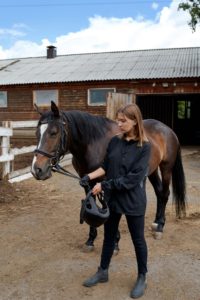
It is a fact that a break is necessary for everyone, even animals. Horses that run races also deserve a nice break to refresh themselves and get a change from the routine. Besides planned breaks, there may be cases wherein your equine gets injured; thus, it has to stay off the arena for an extended period. Horses are more than just farm animals, they’re part of the family. They bring us joy, help us grow and learn, and teach our children about respecting other living beings, so Horsevills can provide you with the gear and information you need to get your horse back on track.
No matter the reason, a long break from routine reduces the stamina and strength in the body. So, you have to retrain the old horse to get back into shape and regain the lost energy. So, how can you do that?
Well, it is easy but looks different from your usual training. Read on to discover how you can provide good exercise for your stallion while assuring its safety.
Check all Gear
Before restarting the training process, it is vital to ensure that all the accessories and training gear are in their best condition. It will help you improve the horse’s comfort and make it easy to control them while riding.
Besides saddle and reins, check that you have an excellent snaffle bit for the gelding. A snaffle bit reduces the pressure on the lip and does not cut the edges of the mouth; thus, the horse trains easily without any pains or uneasiness.
Next, divide your training schedule weekly to ensure your horse’s holistic strength. It will also make it more comfortable for the gelding to adapt to the routine and build a more muscular body; since older horses have had training before, bringing them to a new way can be tricky. However, doing it with consistency and slight modification can work like magic for you and the horse.
Modulate the intensity
Starting at week one, you should include groundwork a minimum of 3 times wherein the horse will walk for 30 minutes and do a little calisthenics. Likewise, as they build some stamina and feel okay with the initial time, increase it by 10-15 minutes after a week.
In the following weeks, you may increase the walking speed at the same time. It helps to ease the stallion’s metabolic system and turn it into a regular aerobic routine. Modulating the intensity gradually assists the body cells in shuttling blood more efficiently. Also, the muscles gain capillary density, thus, improving the work at hand.
Vary the surfaces
Optimal muscle recruitment largely depends on proprioception. Simply put, you must vary the training surfaces to build strong motor skills. Working on the same surface affects the proprioception of the stallion, thus making the motor system misfire on new areas.
You do not have to spare time to go to a new surface daily. Instead, you can keep one or two weekdays on different lands. Simply put, your stallion should be aware of working on sandy, bumpy trails and other areas. Besides assisting in building resilience, it also enables the stallion to have solid reflexive skills.
Bottom line
Retraining a horse is more complex than teaching a new stallion. Therefore, you must follow the workout ratios for better results. The 20% of your schooling time should include warm-up and cool-down of the stallion to reduce any sore muscles or cramps. We hope the information above helps you build a good training schedule for your old friend.









